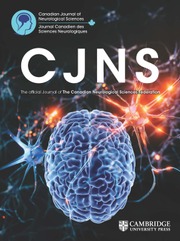No CrossRef data available.
Article contents
F.3 fMRI-based deep brain stimulation programming: a blinded, crossover clinical trial
Published online by Cambridge University Press: 10 July 2025
Abstract
Background: Deep brain stimulation (DBS) in Parkinson’s disease (PD) requires extensive trial-and-error programming, often taking over a year to optimize. An objective, rapid biomarker of stimulation success is needed. Our team developed a functional magnetic resonance imaging (fMRI)-based algorithm to identify optimal DBS settings. This study prospectively compared fMRI-guided programming with standard-of-care (SoC) clinical programming in a double-blind, crossover, non-inferiority trial. Methods: Twenty-two PD-DBS patients were prospectively enrolled for fMRI using a 30-sec DBS-ON/OFF cycling paradigm. Optimal settings were identified using our published classification algorithm. Subjects then underwent >1 year of SoC programming. Clinical improvement was assessed under SoC and fMRI-determined stimulation conditions. Results: fMRI optimization significantly reduced the time required to determine optimal settings (1.6 vs. 5.6 months, p<0.001). Unified Parkinson’s Disease Rating Scale (UPDRSIII) improved comparably with both approaches (23.8 vs. 23.6, p=0.9). Non-inferiority was demonstrated within a predefined margin of 5 points (p=0.0018). SoC led to greater tremor improvement (p=0.019), while fMRI showed greater bradykinesia improvement (p=0.040). Conclusions: This is the first prospective evaluation of an algorithm able to suggest stimulation parameters solely from the fMRI response to stimulation. It suggests that fMRI-based programming may achieve equivalent outcomes in less time than SoC, reducing patient burden while potentially enhancing bradykinesia response.
Information
- Type
- Abstracts
- Information
- Copyright
- © The Author(s), 2025. Published by Cambridge University Press on behalf of Canadian Neurological Sciences Federation

